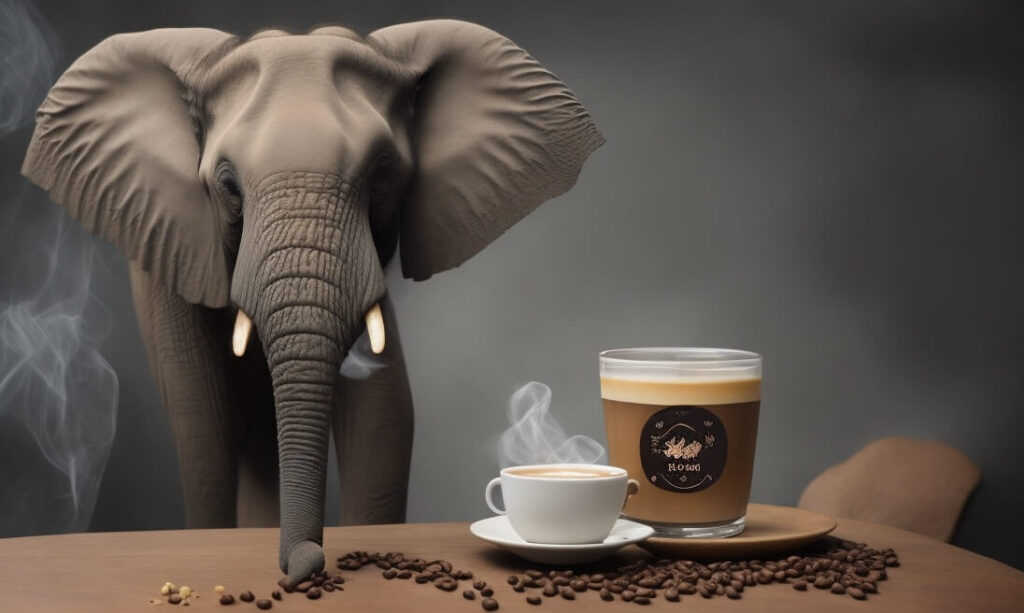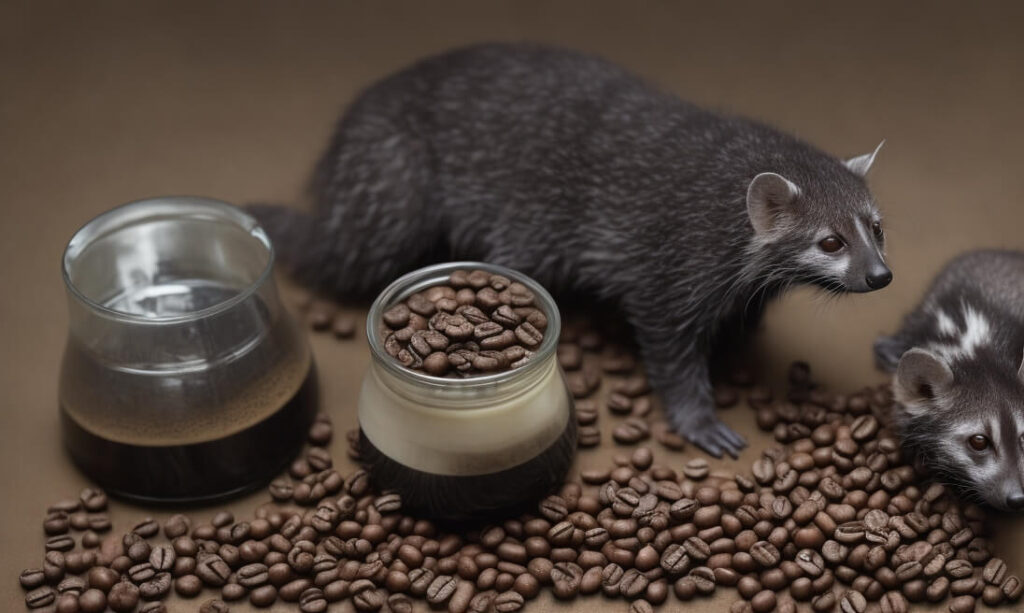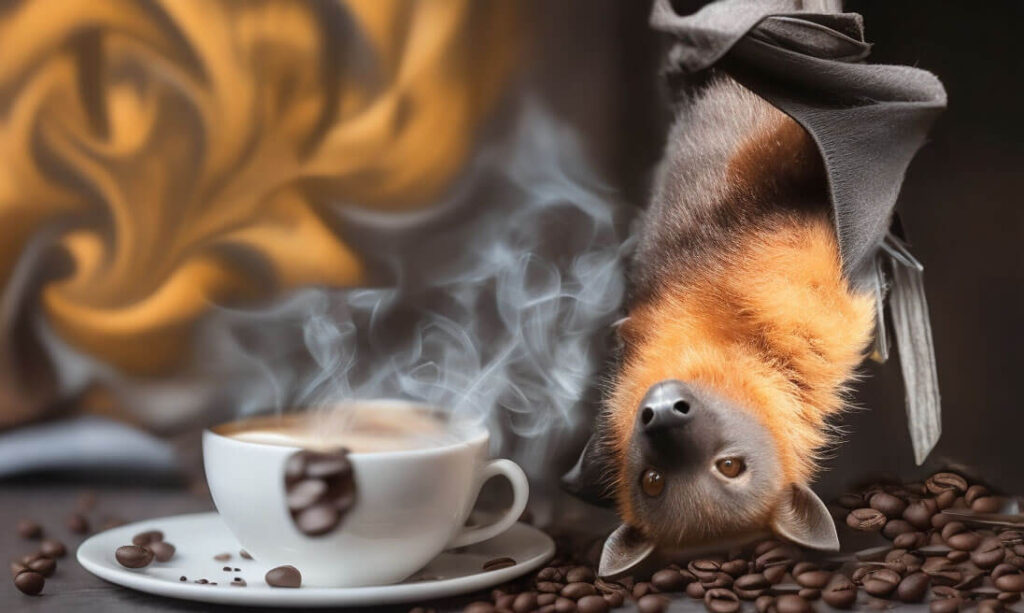Coffee is a beverage beloved by many. It is a morning ritual, an afternoon pick-me-up, a comfort in times of stress, and a conversation starter. But for some, coffee is more than just a drink – it is an exploration into the vast and varied world of flavors, processes, and yes, prices. Some of the most expensive coffee beans in the world are surprisingly linked to animal feces, providing an unforgettable experience for coffee connoisseurs.
Indeed, the most intriguing and costly coffees include those beans which have passed through the digestive system of animals, such as the civet cat and elephants. This is what gives us the renowned and costly kopi coffee. The resulting brew from these processed beans is unlike anything you will encounter in your local coffee shop. It is an extravagant indulgence, reserved for those willing to pay the price for an extraordinary experience.
But what makes these coffees so expensive, and why are people willing to pay such a premium for them? The answer lies in the unique and labor-intensive production processes, the rarity of the beans, and the unforgettable flavors they produce.
Unpacking the Process Behind the Price

To understand why these coffees command such high prices, it is crucial to understand the process behind their production. Regular coffee is a complex beverage, with over 1,000 chemical compounds contributing to its taste and aroma. But when you add in a layer of animal digestion, the complexity increases manifold.
The most notorious of these processes is the creation of kopi luwak, or civet coffee. Originating in Indonesia, this involves the Asian palm civet, a small mammal that eats the ripest coffee cherries for their pulp. The coffee beans, undigested, pass through the civet’s system, undergoing chemical changes due to enzymes in the civet’s stomach. This process reduces the beans’ bitterness and imparts a unique flavor profile.
But the civet isn’t the only animal involved in coffee production. The bat is another creature contributing to expensive coffee, but in a slightly different way. In the case of bat poop coffee, it’s the bat’s impeccable ability to select only the most ripe and perfect cherries that makes this variety so rare and special. This coffee is typically harvested in the wild, making it incredibly hard to come by, contributing to its high cost.
However, the intrigue and controversy surrounding these coffees don’t stop with the unusual production methods. Some question the ethics of these processes, particularly when it comes to civet coffee. There are concerns about the potential for exploitation and animal cruelty, as the demand for civet coffee has led to some producers caging the civets and feeding them a diet solely of coffee cherries.
Ethical considerations aside, the unique production methods, combined with the labor-intensive process of collecting the beans, contribute to their high cost. These coffees are not produced on a large scale, and each batch requires a significant amount of time and effort to produce, resulting in a product that is expensive but offers a truly unique taste experience.
Top 5 Most Expensive Coffee Beans

In the world of premium coffees, a few stand out due to their high price tag and unique taste profiles. These are the beans that coffee connoisseurs are willing to pay a premium for.
At the top of the list is Black Ivory Coffee, which costs more than $500 per pound. This coffee is made from Thai Arabica beans that elephants have eaten and excreted. Similar to civet coffee, the elephants’ digestive enzymes break down the proteins in the coffee beans, which makes the coffee less bitter and imparts a unique flavor. Despite its cost, this coffee has a loyal following of customers who appreciate its unique taste and the ethical way it is produced, with a percentage of the profits going to support elephant conservation efforts in Thailand.
Finca El Injerto Coffee, priced at $500 per pound, is another sought-after coffee. Grown in Guatemala, it is known for its complex flavor profile, which includes notes of chocolate, caramel, and citrus. The coffee is grown on a single estate, and the farmers go to great lengths to ensure the quality of the beans, even removing any beans that are less than perfect by hand.
Hacienda La Esmeralda Coffee, grown in Panama and priced at $350 per pound, is known for its floral and fruity flavor profile. The coffee is grown on small plots of land, which allows the farmers to control every aspect of the cultivation process. The result is a coffee that has a distinct flavor of jasmine, bergamot, and peach.
Kopi Luwak Coffee, at $160 per pound, is made from beans that have been eaten and excreted by civet cats in Indonesia. The beans undergo changes during digestion, resulting in a coffee that is smooth, less bitter, and has a unique flavor profile. Despite the controversy surrounding its production, kopi luwak remains a sought-after coffee due to its unique taste.
Rounding out the top five is Ospina Dynasty Coffee. Priced at $150 per pound, this coffee is grown in Colombia and is known for its rich and full-bodied flavor profile. The Ospina family, who produce this coffee, have been involved in coffee production for generations, and their dedication to quality is evident in every cup.
These are just a few examples of the most expensive coffee beans in the world, each with their own unique stories and flavor profiles. Despite their cost, these coffees offer an experience that is truly unique, making them a worthwhile indulgence for those who appreciate the finer things in life.
Unique Aromas and Flavors

The allure of these costly coffees isn’t just about the price or even the unusual production methods; it’s about the unique aroma and flavors they offer. Each of these expensive coffee beans delivers a distinct flavor profile that sets it apart from regular coffee.
Take, for example, Black Ivory Coffee. The process it goes through within the elephant’s digestive system results in a coffee that is not just less bitter, but also carries hints of chocolate, malt, spice, and a touch of grass. The process imparts these beans with flavors that are truly unique and can’t be replicated by other means.
Finca El Injerto Coffee, known for its intense flavor profile, features a combination of chocolate, caramel, and citrus. This variety of flavors comes from the unique growing conditions in Guatemala, the meticulous process of selecting only the best beans, and the careful roasting process.
Hacienda La Esmeralda Coffee, with its floral and fruity flavor profile, is another unique offering in the world of premium coffee. The distinct notes of jasmine, bergamot, and peach are a result of the unique geisha coffee variety and the specific microclimate where it’s grown.
Then there’s the kopi luwak, arguably the most infamous of these coffees. The journey these beans take through the civet cat’s digestive system transforms them, resulting in a coffee that is incredibly smooth with less bitterness. Despite the unusual production method, it results in a cup of coffee that offers notes of chocolate, caramel, and a hint of earthiness.
Last in the top five, but by no means the least, is Ospina Dynasty Coffee. This coffee’s rich and full-bodied flavor profile features notes of chocolate, caramel, and nuts. The Ospina family has been perfecting their craft for generations, and the result is a coffee that not only tastes exceptional but has a consistency that is hard to find.
Poop Coffees – From Novelty to Delicacy

The phrase “poop coffee” might elicit a range of reactions, from curiosity to outright disgust. But these coffees, which include civet cat poop coffee, monkey poop coffee, and even goat poop coffee, have moved from being a novelty to being recognized as a delicacy.
The process behind these coffees is certainly unique. The coffee cherries are eaten by an animal (like the civet cat, monkeys, or goats), and the beans are collected from the feces, cleaned, roasted, and then ground to make coffee. These animals have a natural ability to select the best and ripest coffee cherries, and their digestive enzymes change the beans’ proteins, which directly impacts the bitterness and flavor of the coffee.
Civet cat poop coffee or kopi luwak is the most well-known of these coffees. The kopi luwak coffee beans are collected from the feces of the civet cat. This coffee has a unique, complex flavor profile and a distinct lack of bitterness. It’s an acquired taste and one that is much sought after by coffee enthusiasts.
Monkey poop coffee, or kape alamid, is another type of animal-processed coffee. It’s created in a similar way to civet coffee, with the beans being eaten and subsequently excreted by monkeys. The resulting coffee has a lighter, more delicate flavor than civet coffee.
Less common but still intriguing is goat poop coffee. This is made using beans eaten and excreted by goats. The resulting coffee has a strong, robust flavor. Despite its rarity and the novelty factor, goat poop coffee is appreciated for its unique taste.
It’s important to note that while these “poop coffees” are a delicacy and novelty, there are ethical considerations to bear in mind. Some producers have been accused of inhumane treatment of the animals involved, and potential buyers should take care to source these coffees from reputable and ethical producers.
Lesser-Known Yet Exquisite Coffee Beans

While the most expensive coffee beans garner much attention, there are other coffee varieties that, while not as expensive, offer unforgettable aromas and flavors. Here are five that you might want to explore.
El Salvador Coffee, priced at $135 per pound, is grown in El Salvador. Known for its bright and fruity flavor profile, this coffee delivers notes of apricot, peach, and honey. It’s a testament to the rich volcanic soil in which it’s grown and the careful processing methods used.
Jamaica Blue Wallenford Coffee, priced at $100 per pound, is another worthy contender. This coffee, grown in the high altitude regions of Jamaica, is known for its mild, balanced flavor profile. It delivers notes of chocolate and nuts and has a smooth, buttery mouthfeel that coffee enthusiasts appreciate.
St. Helena Coffee, grown on the remote island of St. Helena in the South Atlantic Ocean, costs $79 per pound. Despite its remote origin, this coffee is prized for its unique, wine-like flavor profile, which includes notes of caramel and nuts.
Black Blood of the Earth Coffee, at $65 an ounce, is an unusual addition to this list. This coffee isn’t expensive because of its origin or the beans used, but because of the unique brewing process. It’s made using a cold vacuum extraction method that produces a coffee concentrate with 40 times more caffeine than regular coffee. The resulting brew is strong, bold, and highly caffeinated.
Finally, Hawaiian Kona Coffee, at $34 per pound, offers a taste of the Aloha spirit. Grown on the slopes of the Mauna Loa volcano in Hawaii, this coffee is known for its smooth, medium-bodied flavor profile. It delivers notes of caramel, butter, and nuts and has a sweet, fruity finish that lingers on the palate.
Each of these coffee beans, despite their price tags, delivers a unique taste experience. Whether you’re an ardent coffee lover or a casual drinker, there’s a world of flavors waiting for you to explore in the realm of premium coffees.
Conclusion
In conclusion, our exploration of the world’s most expensive coffee beans reveals that the price tag is often reflective of more than just the cost of the beans themselves. These coffees offer unforgettable aromas, exquisite flavors, and unique stories that make each cup a memorable experience.
From Black Ivory Coffee to Hawaiian Kona Coffee, these coffees represent the extreme care, dedication, and sometimes sheer luck that contribute to their creation. The stories of elephants and civet cats selecting the best coffee cherries, the unique climates and soils in which some of these beans grow, and the meticulous attention to detail in the processing, roasting, and brewing of these coffees are all part of the allure.
Poop coffees, in particular, have emerged from being a novelty to being recognized as delicacies. Civet cat poop coffee, monkey poop coffee, and even goat poop coffee have intrigued coffee enthusiasts and novices alike, leading to a unique sub-category in the world of coffee. However, it’s crucial to remember the ethical implications and ensure these coffees are sourced from reputable, humane producers.
For those seeking out the exceptional, other exquisite coffee beans that aren’t as expensive but still offer unforgettable aromas and flavors are also worth exploring. These include the likes of El Salvador Coffee, Jamaica Blue Wallenford Coffee, St. Helena Coffee, Black Blood of the Earth Coffee, and Hawaiian Kona Coffee. Each offers a unique taste experience that belies their lesser price tags.
In essence, coffee is more than just a beverage—it’s an experience. From the most expensive cup of coffee to more affordable but still exquisite options, each coffee offers a unique journey of aromas, flavors, and stories. Whether you’re a coffee connoisseur or someone who just enjoys a good cup of coffee, these unique, expensive coffee beans present an opportunity to deepen your appreciation of this timeless drink.
So, the next time you sip on a cup of coffee, remember that it’s not just about the caffeine kick. It’s about the beans, the people, the animals, and the land that made that cup possible. It’s a connection to the world in a cup, a world that’s diverse, vibrant, and, at times, wonderfully strange. Whether that connection is worth the price is ultimately a subjective decision, but one thing’s for sure—the world of coffee is a rich tapestry worth exploring, one sip at a time.

